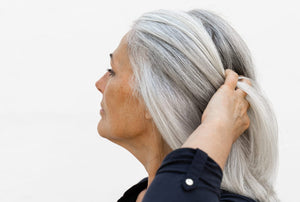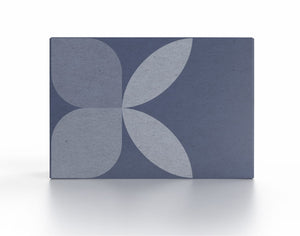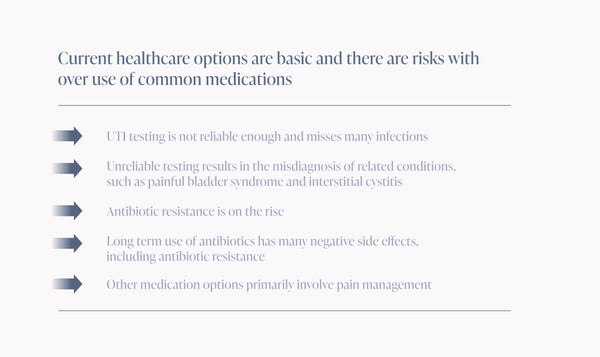The vaginal microbiome
The vaginal microbiome plays a crucial role in genitoruinary health, particularly by preventing the colonisation of harmful bacteria. A healthy vaginal microbiome, primarily dominated by Lactobacillus species, helps protect against infections that can ascend into the urinary tract, reducing the risk of Urinary Tract Infections (UTIs). When the vaginal microbiome is disrupted, or there is an imbalance (also known as dysbiosis), it can increase the likelihood of pathogenic bacteria thriving. This imbalance can lead to recurrent UTIs (rUTIs) as the harmful microbes are more likely to travel from the vagina to the urinary tract.

Urinary conditions are common amongst women
- Acute Urinary Tract Infections (UTIs) occur in up to 50% of women in their lifetime.¹
- 30 - 44% of women who have a UTI will have a recurrence within 3 months.²
- Multiple recurrences often follow an initial infection, resulting in clustering episodes.²
- Menopause predisposes women to recurrent UTI due to changes in the urogenital microbiome.

Recurrent infections can be debilitating
- In 2017 - 18, treating unplanned admissions for UTIs cost the NHS £386.1 million.³
- For those who suffer from chronic UTIs, the ongoing pain can be debilitating, dramatically affecting their daily lives, as well as overall mental and physical health.⁴
In women, the vaginal microbiome plays a key role in the pathogenesis of UTIs
Two recent studies found a close similarity between the vaginal and bladder microbiota, both suggesting the existence of a common urogenital microbiota.⁵
Women with rUTI often have specific alterations in their vaginal microbiota, especially at the time of UTI, namely, increased rates of E. coli and depletion of the normally predominant lactobacilli.⁶
The vaginal microbiome of women with recurrent UTI demonstrated a diminished lactobacillus morphotype composition resembling bacterial vaginosis pathophysiology.⁸

Alterations in the vaginal microbiome increase one’s risk of a UTI due to shared microbes.
We believe investigating and optimising the health of the vaginal microbiome should be an intervention for women with recurrent UTIs .

Dr. Jo Bailey explains
Listen to Consultant Gynaecologist, Dr. Jo Bailey explain Urinary Tract Infections.
We understand the science, and are equipped to help women overcome vaginal dysbiosis
Lactobacillus benefits:
- Lactic acid producing
- Maintain pH 3.7 - 4.5
- Produce bacteriocins, anti-microbial activity
- Adhere to cell walls, including uro-epithelial cells, creating a barrier to pathogens
“Lactobacillus is a probiotic organism that can help prevent urinary tract infections (UTIs) by competing with pathogens, producing inhibitory substances, and modulating the immune response.5”
Pathogens associated with:
- Increased levels of inflammatory cytokines
- Increased immune activity
- Increased incidence of vaginal infections and urinary infections
“The vagina can serve as a reservoir for several bacterial species known to cause UTIs (E. coli, GBS, Staphylococcus) as well as underappreciated potential uropathogens (G. vaginalis, Aerococcus, Ureaplasma) that can cause UTI and have been associated with urological conditions such as urgency incontinence and “sterile” pyuria.9”

Vaginal probiotics
Shop Pelvic Relief vaginal probiotics, formulated with clinically researched strains to restore balance, relieve bacterial imbalances and promote optimal urogenital health naturally.

Microbiome screening
Learn about our innovative Vaginal Microbiome Test and find the right options just for you.
REFERENCES: 1. https://cks.nice.org.uk/topics/urinary-tract-infection-lower-women/background-information/prevalence/ 2. https://pmc.ncbi.nlm.nih.gov/articles/PMC4688544/ 3. https://www.theyworkforyou.com/wrans/?id=2018-11-21.194075.h&s=Virendra#g194075.q0 4. https://liveutifree.com/chronic-urinary-tract-infection/ 5. https://www.frontiersin.org/journals/cellular-and-infection-microbiology/articles/10.3389/fcimb.2021.617002/full#B130 6. https://pubmed.ncbi.nlm.nih.gov/9697725/ 7. https://www.frontiersin.org/files/Articles/617002/fcimb-11-617002-HTML/image_m/fcimb-11-617002-g004.jpg 8. https://pmc.ncbi.nlm.nih.gov/articles/PMC2620669/ 9. https://pmc.ncbi.nlm.nih.gov/articles/PMC7186798/#



